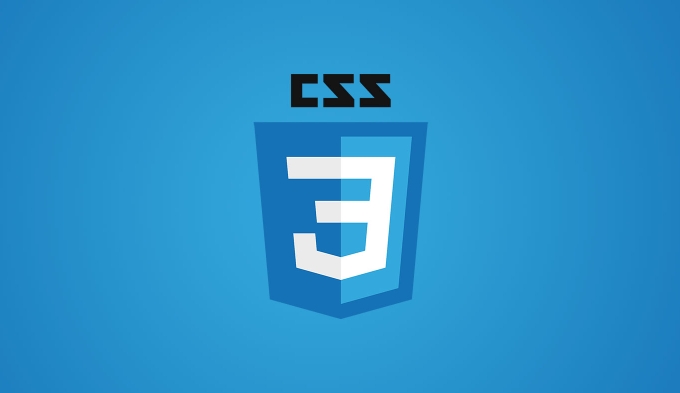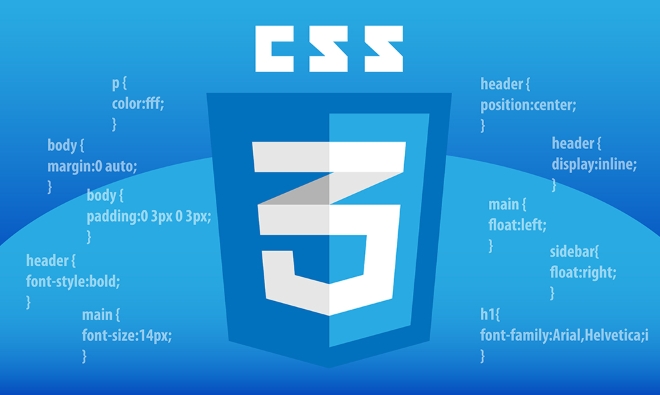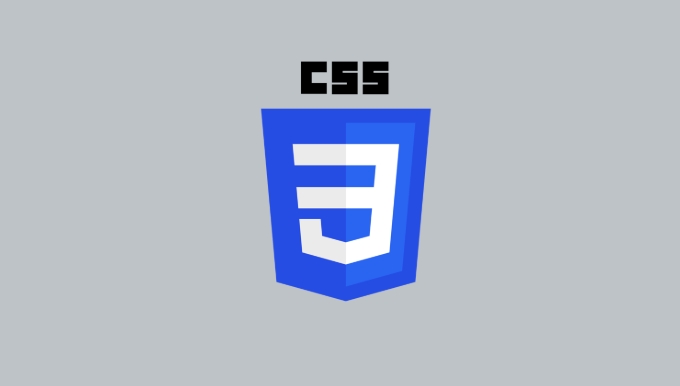The key to making a pure CSS drop-down menu is that it has clear structure, natural interaction, and no JavaScript is required. 1. Use unordered list
<ul> and list items <li> to build a semantic HTML structure. Place the main menu item under .menu, and the submenu is implemented with nested <ul>; 2. Use display to hide through CSS's 'hover pseudo-class and positioning control, and use display: none; to hide the submenu by default. Use display: block; to display when hovering, and set position: absolute; to cooperate with parent element position: relative; to optimize the experience and add transition animations, such as opacity and visibility to combine transition to achieve fade-in effect; 4. Mobile terminals do not support: hover and need additional processing or are only available for desktop use. A stable and practical pure CSS drop-down menu can be achieved with reasonable structure, accurate style and optimized details.
It is actually not difficult to make a pure CSS drop-down menu, but to be stable and practical, you need to pay attention to some details. The key point is that the structure is clear, the interaction is natural, and no JavaScript is required.

Basic HTML structure
HTML for the drop-down menu is generally constructed using unordered list <ul></ul> and list item <li> , so that the semantics are clear and convenient for nesting submenu.

<ul class="menu">
<li><a href="#">Home</a></li>
<li>
<a href="#">Product?</a>
<ul class="submenu">
<li><a href="#">Product One</a></li>
<li><a href="#">Product 2</a></li>
</ul>
</li>
<li><a href="#">About Us</a></li>
</ul><ul><li> Place the main menu item under .menu<li> Nested an <ul> inside an item with a submenu<li> Using a symbol like ? can prompt the user to have a drop-down content hereThis structure is simple and intuitive, and it is also convenient for subsequent style control.
Core CSS Tips
The key to implementing pull-down is to utilize CSS's :hover and positioning.

Basic ideas:
<ul><li> The submenu is hidden by default (for example, usedisplay: none; )<li> Display submenu when the mouse hovers over the parent <li><li> Use position: absolute; to locate the position of the submenuSample code:
.menu > li {
position: relative;
}
.submenu {
display: none;
position: absolute;
top: 100%;
left: 0;
background: #ffff;
border: 1px solid #ccc;
min-width: 150px;
}
.menu > li:hover .submenu {
display: block;
}This allows for a simple hover display effect.
But be aware of:
<ul><li> The parent container needsposition: relative , otherwise the absolute positioning will find the wrong reference<li> It is best to set min-width in the submenu to avoid being too narrow to affect the experience<li> Menu level may need to add z-index to avoid being blockedSmall optimization to improve experience
Although the function is implemented, the user experience can be smoother.
Add a transition animation
Showing or hiding directly may appear stiff, adding a little transition will make the visual feel better:
.submenu {
opacity: 0;
visibility: hidden;
transition: opacity 0.2s, visibility 0.2s;
}
.menu > li:hover .submenu {
opacity: 1;
visibility: visible;
}This way the submenu will "fade in" instead of suddenly appearing, making it look more comfortable.
Add hover effect to the main menu
Adding background color changes to the main menu item can also enhance the sense of interaction:
.menu > li > a:hover {
background-color: #f0f0f0;
}Mobile compatibility tips
The pure CSS drop-down menu will not trigger :hover when clicking on the mobile side, so if you want to consider mobile support, you usually need to use JS or change it to an interactive method. But if it's just desktop use, there's no problem.
Basically that's it. Clear structure positioning control and small details are optimized, and a practical pure CSS drop-down menu can be created.
The above is the detailed content of Creating dropdown menus with pure css. For more information, please follow other related articles on the PHP Chinese website!

Hot AI Tools

Undress AI Tool
Undress images for free

Undresser.AI Undress
AI-powered app for creating realistic nude photos

AI Clothes Remover
Online AI tool for removing clothes from photos.

Clothoff.io
AI clothes remover

Video Face Swap
Swap faces in any video effortlessly with our completely free AI face swap tool!

Hot Article

Hot Tools

Notepad++7.3.1
Easy-to-use and free code editor

SublimeText3 Chinese version
Chinese version, very easy to use

Zend Studio 13.0.1
Powerful PHP integrated development environment

Dreamweaver CS6
Visual web development tools

SublimeText3 Mac version
God-level code editing software (SublimeText3)

Hot Topics
 How can I include CSS only on some pages?
Jun 11, 2025 am 12:01 AM
How can I include CSS only on some pages?
Jun 11, 2025 am 12:01 AM
There are three ways to selectively include CSS on a specific page: 1. Inline CSS, suitable for pages that are not frequently accessed or require unique styles; 2. Load external CSS files using JavaScript conditions, suitable for situations where flexibility is required; 3. Containment on the server side, suitable for scenarios using server-side languages. This approach can optimize website performance and maintainability, but requires balance of modularity and performance.
 Flexbox vs Grid: Understanding the Key Differences in CSS Layout
Jun 10, 2025 am 12:03 AM
Flexbox vs Grid: Understanding the Key Differences in CSS Layout
Jun 10, 2025 am 12:03 AM
Flexboxisidealforone-dimensionallayouts,whileGridsuitstwo-dimensional,complexlayouts.UseFlexboxforaligningitemsinasingleaxisandGridforprecisecontroloverrowsandcolumnsinintricatedesigns.
 Creating an Auto-Closing Notification With an HTML Popover
Jun 10, 2025 am 09:45 AM
Creating an Auto-Closing Notification With an HTML Popover
Jun 10, 2025 am 09:45 AM
The HTML popover attribute transforms elements into top-layer elements that can be opened and closed with a button or JavaScript. Popovers can be dismissed a number of ways, but there is no option to auto-close them. Preethi has a technique you can u
 What is 'render-blocking CSS'?
Jun 24, 2025 am 12:42 AM
What is 'render-blocking CSS'?
Jun 24, 2025 am 12:42 AM
CSS blocks page rendering because browsers view inline and external CSS as key resources by default, especially with imported stylesheets, header large amounts of inline CSS, and unoptimized media query styles. 1. Extract critical CSS and embed it into HTML; 2. Delay loading non-critical CSS through JavaScript; 3. Use media attributes to optimize loading such as print styles; 4. Compress and merge CSS to reduce requests. It is recommended to use tools to extract key CSS, combine rel="preload" asynchronous loading, and use media delayed loading reasonably to avoid excessive splitting and complex script control.
 How to use Lotties in Figma
Jun 14, 2025 am 10:17 AM
How to use Lotties in Figma
Jun 14, 2025 am 10:17 AM
In the following tutorial, I will show you how to create Lottie animations in Figma. We'll use two colorful designs to exmplify how you can animate in Figma, and then I'll show you how to go from Figma to Lottie animations. All you need is a free Fig
 Breaking Boundaries: Building a Tangram Puzzle With (S)CSS
Jun 13, 2025 am 11:33 AM
Breaking Boundaries: Building a Tangram Puzzle With (S)CSS
Jun 13, 2025 am 11:33 AM
We put it to the test and it turns out Sass can replace JavaScript, at least when it comes to low-level logic and puzzle behavior. With nothing but maps, mixins, functions, and a whole lot of math, we managed to bring our Tangram puzzle to life, no J
 External vs. Internal CSS: What's the Best Approach?
Jun 20, 2025 am 12:45 AM
External vs. Internal CSS: What's the Best Approach?
Jun 20, 2025 am 12:45 AM
ThebestapproachforCSSdependsontheproject'sspecificneeds.Forlargerprojects,externalCSSisbetterduetomaintainabilityandreusability;forsmallerprojectsorsingle-pageapplications,internalCSSmightbemoresuitable.It'scrucialtobalanceprojectsize,performanceneed
 Does my CSS must be on lower case?
Jun 19, 2025 am 12:29 AM
Does my CSS must be on lower case?
Jun 19, 2025 am 12:29 AM
No,CSSdoesnothavetobeinlowercase.However,usinglowercaseisrecommendedfor:1)Consistencyandreadability,2)Avoidingerrorsinrelatedtechnologies,3)Potentialperformancebenefits,and4)Improvedcollaborationwithinteams.






